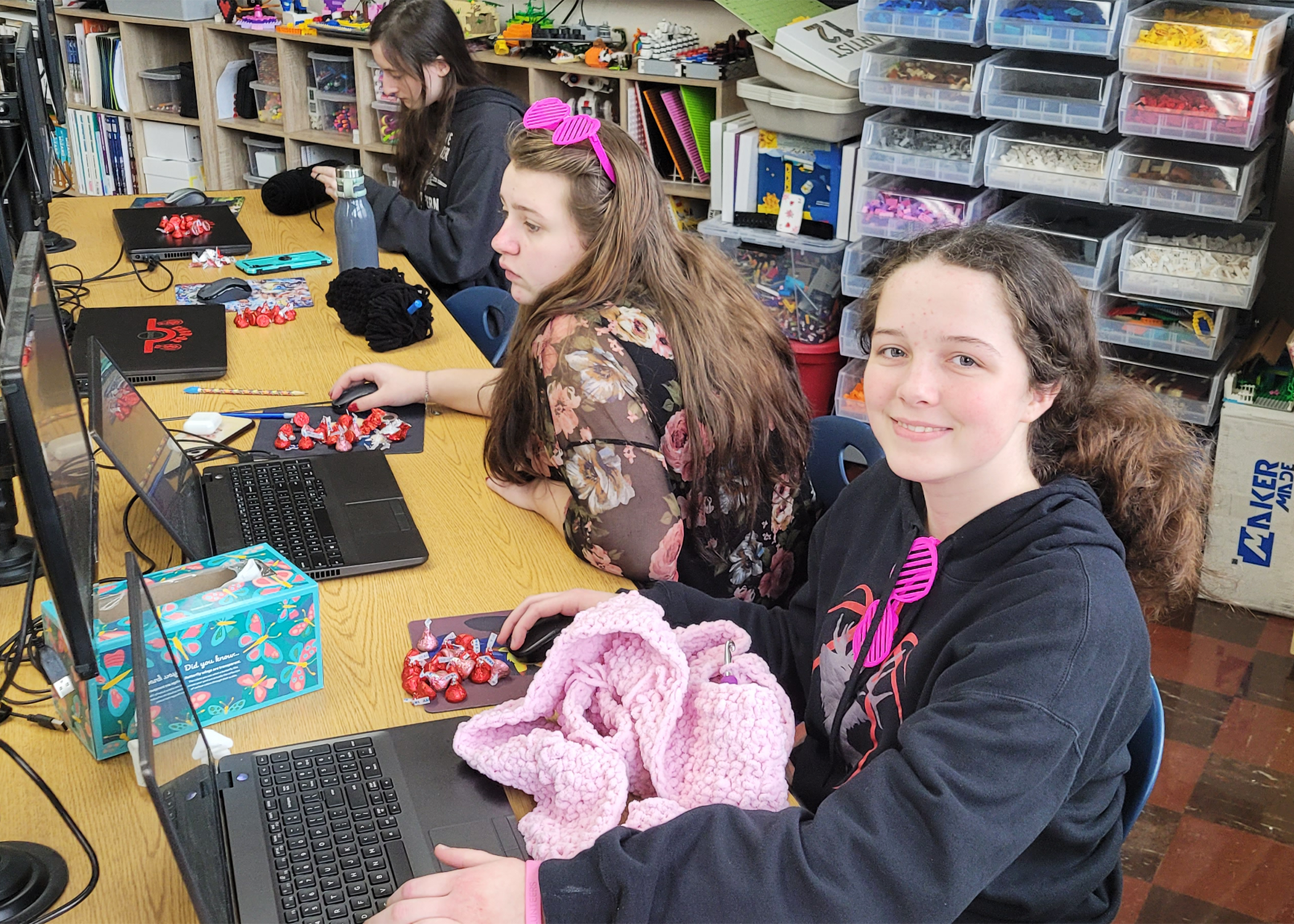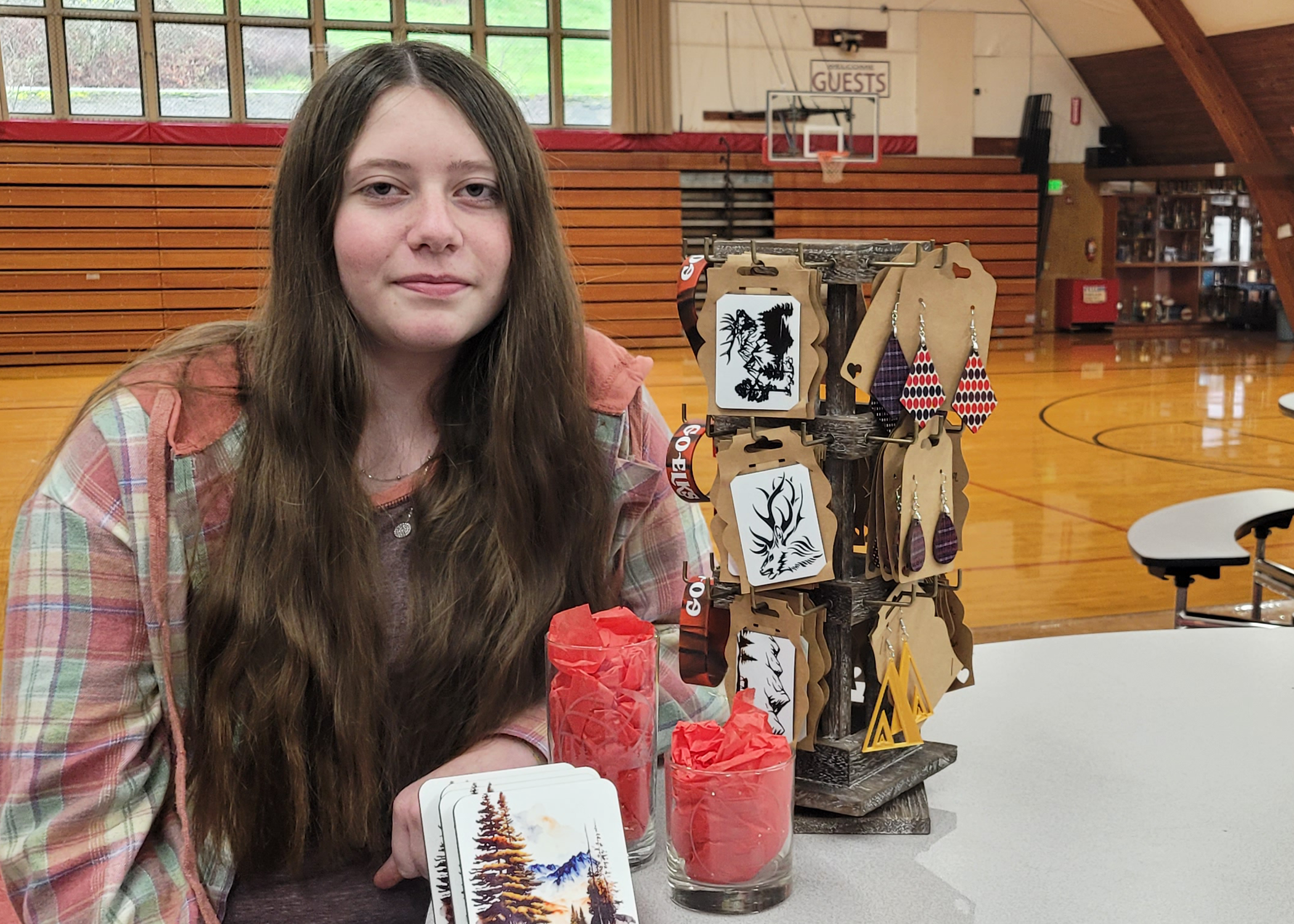
Career and Technical Education (CTE) at Elkton High School connects learning to careers.
Future Foundations for Students
Students build websites, some crochet and others work on computer-aided design (CAD) while a 3-D printer hums in the background. Students innovate in Elkton High School’s Maker Space classroom. This type of learning is part of Career and Technical Education (CTE).
The magic of CTE is the connection between learning and high-demand occupations. Many local high schools offer workforce development pathways in various fields such as healthcare, education, agriculture, manufacturing and more. This enables students to gain skills that benefit our local economy. Many classes are also connected to dual college credit, professional certificates and internships.
Sarah Billings is the technology teacher at Elkton High School and runs the Maker Space classroom. She understands how CTE programs can provide work-based learning opportunities through creativity. She worked in the manufacturing engineering industry before becoming a teacher. “Creativity comes in a lot of different shapes and sizes, and I want students to have exposure and see what’s out there.” She also explains students can build on their skills as technology changes.
Maker Space students use creative thinking as they learn about design, computer programing and engineering. Jessica Hawkinson is in tenth grade and is using HTML coding to make a website. When she comes to a roadblock, she takes a brief crochet break. When she returns to the website project, she typically figures out how to solve the problem.
Classroom resources and equipment provide a place to create products for the student-run store. From custom-designed hoodies, laser-engraved and 3-D printed items to coffee mugs and earrings, the items sold during sporting events are a big hit. The class partners with SkillsUSA (a technical student organization) and Youth Transition Program (YTP) guided by Duane Madison.
“People willing to buy what I make have helped my self-esteem,” said junior Kaylee Erickson. Kaylee also helps mentor students in YTP who work in the student store. “We learn social skills,” she said when they take orders, answer questions and complete transactions.

Elkton High School eleventh-grade student Kaylee Erickson makes items that are sold in the student store.
Senior Grant Olson has also experienced the benefits of CTE at Elkton High School and has taken woodshop, metals and natural resources classes taught by Braden Groth. He said he likes to see the outcome of where something came from, like one piece of wood, and what you can do with it. Last summer he worked in construction. Currently, he’s an aid for middle schoolers in woodshop class. “It’s fun watching them, helping out and solving problems.”
Elkton School District Superintendent Andy Boe mentioned that community plays a large role in helping prepare students. For instance, Elkton Community Education Center (ECEC) provides summer jobs for youth. Students work in the store, butterfly pavilion and give tours of the grounds.
Smooth operations of CTE programs require behind-the-scenes work. Boe explained that Douglas ESD helps bridge the gap to the administrative side of CTE. Tracy Spelgatti helps with this. The former teacher is the CTE regional coordinator for the Douglas Education Service District. She helps local school districts create and sustain state recognized CTE programs.
Spelgatti stays updated on Oregon Department of Education requirements for state recognized CTE programs. CTE instructors must have 2,000 hours of relevant experience before applying for a teaching license. Additionally, she manages grants, organizes professional development, helps instructors acquire CTE teaching endorsements and acquires equipment. One useful tool she promotes is a virtual welding system. Students can practice welding, while keeping costs down. School districts can check out this resource for up to two weeks, which is delivered by Douglas ESD’s courier service.
There’s a strategy behind the CTE courses offered. Spelgatti collaborates with advisory committees and industry leaders to help predict future job demands. She also works with Aaron Towne, a work-based learning coordinator, and school districts to administer YouScience® aptitude assessments to high school students. This aptitude-based platform identifies students’ abilities that match career pathways. This information is used to help align CTE knowledge and skills with employment opportunities. The generous support that the broader community provides is linked to the success of CTE programs.
CTE programs are also tied to student leadership organizations that play key roles in extending learning beyond school walls, such as SkillsUSA and FFA. “These organizations offer students opportunities to display and develop skills, network and enhance public speaking abilities—essential to step into the job market,” Spelgatti said.
Elkton High School FFA students are getting ready for their annual plant and metal art sale at the high school’s greenhouse. Community members can buy hanging plants, flower bed plants and vegetable starts and metal art. The sale will take place from April 26 to 28.
“Kids need a reason to want to go to school,” Spelgatti said. “CTE helps to keep kids engaged with learning.”
Plus, there’s a strong link between CTE and high school graduation rates. Ninety-eight percent of students who take at least one CTE course graduate in four years. Three out of four CTE students continue their education beyond the high school level.
Many moving parts help children learn and thrive. Douglas Education Service District is one of the moving pieces. The agency partners with school districts and organizations. The goal is to increase opportunities for all children, from birth to adulthood. To learn more about CTE, Spelgatti invites readers to the Home & Garden Show at the Douglas County Fairgrounds from March 1 to 3. Stop by the CTE booth to say hello and try out the virtual welding system.
